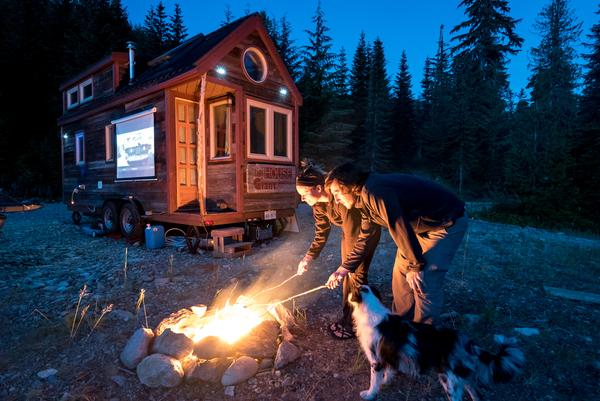
As a newbie tiny house builder – currently building a Tumbleweed Cypress – I eventually found myself stuck at the crossroads, looking down two narrow paths and forced to make the “big decision”: compost or flush?
First I plugged into cyberspace and watched a variety of informational videos on human waste (yep, that’s my life now). I learned that by choosing a composting toilet, I would be picking the greener alternative while decreasing my utility costs and eliminating my need for a black water tank. All good things! So the choice was made – compost – but I feared that this decision was perhaps my gutsiest thus far in the build.
I turned left at the crossroads, onto Humanure Boulevard. It was then that I realized my decision wasn’t complete; there are countless composting toilet options including manufactured and build-it-yourself units.
Which head was to be my maiden throne? How do I take care of the waste? And, perhaps the most important question of all, will it stink? I needed an education in composting.
Compost 101: my first homework assignment was to research the “build-it-yourself” compost toilet option. I had heard good things at the Tumbleweed Workshop from the presenter, Ella Jenkins. She’s a young, hip chick that built her own tiny house. If she can do it, well maybe I could too…
Photo courtesy of Ella Jenkins
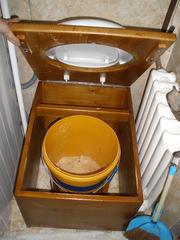
Bucket & Sawdust “Do-It-Yourself” Unit
– $25 – $50 to construct using a 5 gallon bucket from any hardware store.
– Usage requires placing a scoop of sawdust or peat moss in the bottom of the bucket and in between each use. Empty as needed.
PROS: I could toss out my plunger! It’s small, simple, inexpensive, self-contained, and very manageable. No sewage. No water usage.
CONS: Unlike many manufactured compost toilets, this simple bucket unit would not include luxurious perks such as: 1) a ventilating fan, 2) a concealing screen (to block the sight of any.. unmentionables), and 3) a urine diverter. I never thought that urine would play the role of “stench culprit” in this performance, but some believe that mixing the liquids and solids is the source of all-that-is-smelly in a compost toilet.
So, like any rational person without composting experience, I feared my tiny home would reek like a cattle pasture after a fresh rain… that is, until I found a few solutions to the dreaded liquid/solid conundrum. One is to have two toilets: one for liquids and one for solids. Another is to purchase a urine diverter from a manufacturer.
But what about the other perks you get with a manufactured compost toilet? Watch out for my follow up post, as my education continues and I make a final decision!
Compost toilet photo (open) by Wolfgang Berger




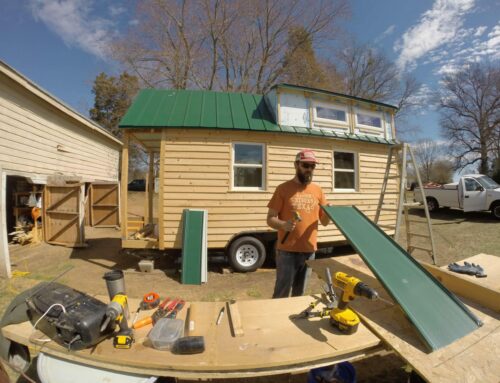
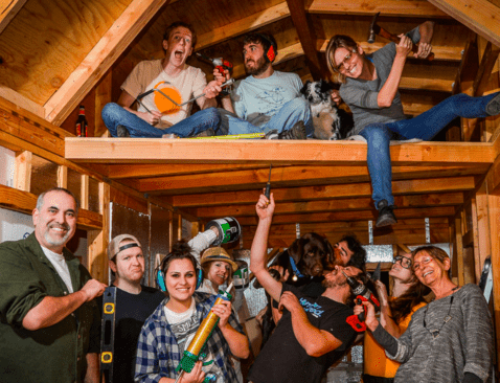
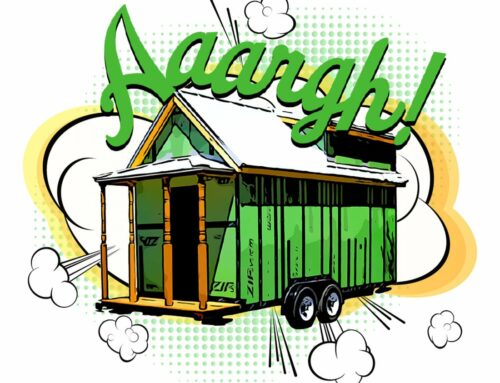
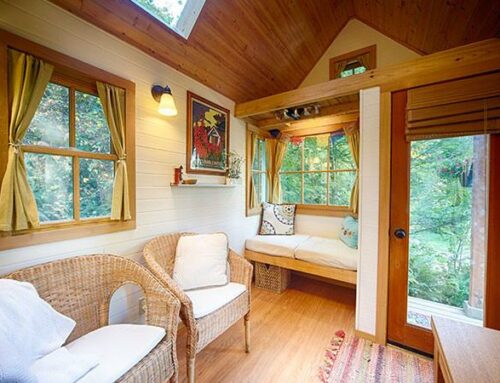
I have done more than my fair share of research on toilets for a “tiny home”. In every case, the bane of a “composting toilet” is dealing with liquids. In my case, since I was building an “office” rather than a “house”, pee was my main concern. Included here is a link to the solution I came up with. After 2 years of use on the original design, I am surprised to find I actually got something 95% right the first time.
After 2 years on and off use with negligible maintenance, I have yet to even detect the smell of (rotting) urine in the office (and this is with the toilet right behind my desk!). The principle works 100%. I would however change just a couple things. First, to empty it I originally used a harbor freight hand pump. Forget it. The pump will last only a couple cycles. Right now, I simply pop the lid and dump it (that is how I can assure you it works, dont EVER pop the lid inside!!!). My “downpipe for pumping it out is also rotting quickly as I made it from copper. Plastic is the only material you want to use with this. Lastly, I need to add some kind of outside vent so that the fluid levels will equalize between the inside of the bucket and that inside the “fill pipe”.
Other than that it would make a perfect companion to a composting toilet to handle liquids!!!
I am thinking about a outhouse composting toilet for irregular purposes. But I am not sure and I am not able to do it myself. I need to hire someone like you. Will you give me some knowledge what exactly I have to do that?
Todd, where is the link?
Todd’s link
https://intermodalhousing.blogspot.com/2015/05/a-home-made-effective-waterless-urinal.html?view=flipcard&m=1
Click on his name. It links to intermodalhousing.